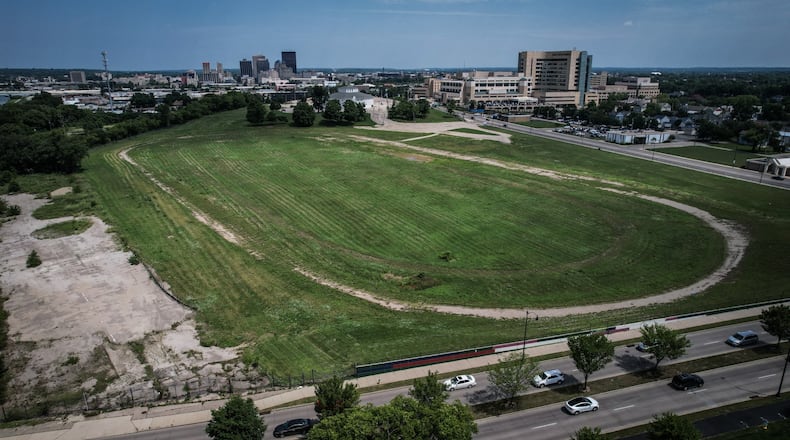These kinds of districts are supposed to serve as a financing and economic development tool that can help fund public infrastructure improvements and residential projects.
Tax increment financing districts provide a tax abatement that can range from 10 to 30 years, said Chris Lipson, Dayton’s acting manager of the development division.
“That revenue is replaced with a Payment In Lieu of Taxes (PILOT), which can then be used for debt service or reimbursement related to infrastructure expenses,” he said. “In some cases, the local school district is also compensated for a portion of their foregone revenue.”
Credit: JIM NOELKER
Credit: JIM NOELKER
OnMain told the Dayton Daily News that properties must meet the legal definition of a blighted property under Ohio Revised Code to be eligible for residential tax abatements.
The group hired a third-party planning firm to study the fairgrounds property and that analysis concluded the site meets the state criteria.
The Dayton City Commission on Wednesday night had the first reading of an ordinance that declares the property is blighted.
If the city approves the legislation, onMain leadership says the first course of action will be to do clean-up work such as asphalt removal, clearing overgrown or dead vegetation and some repairs to the concrete wall along Patterson Boulevard.
“There are still many steps for the overall financing plan of onMain to come together, many of which need to be in place before construction begins on the site,” the group said.
The Montgomery County Fair vacated the property about five years ago, but the site remains fenced off and undeveloped.
OnMain’s master plan and vision for the site calls for around 1,600 housing units, 900,000 square feet of commercial office space, 75,000 square feet of retail and 35,000 square feet of community space. The site also could get as many as three parking garages.
OnMain said it will work with Dayton Public Schools and the city to create a Tax Increment Financing District plan for the site.
The plan would propose a compensation agreement with the school district, since schools are usually the primary recipient of property taxes.
If and when a TIF district plan is put in place, the Ohio Department of Development would need to confirm that it meets state qualifications.
OnMain says this plan would help fund the infrastructure improvements that are needed to make the property ready for investment by private commercial or residential developers.
Needed work includes the installation of utilities, streets, sidewalks, water infrastructure and other public amenities, officials said.
Dayton currently has six active tax increment financing districts, according to Lipson.
They are the CareSource office building and garage on Monument Avenue (formerly Relizon); the Courthouse Crossing building on Second Street; the Tech Town CTA building on Monument Avenue; the GE Episcenter building on River Park Drive; the Downtown District; and the Willow Hills housing development.
About the Author




